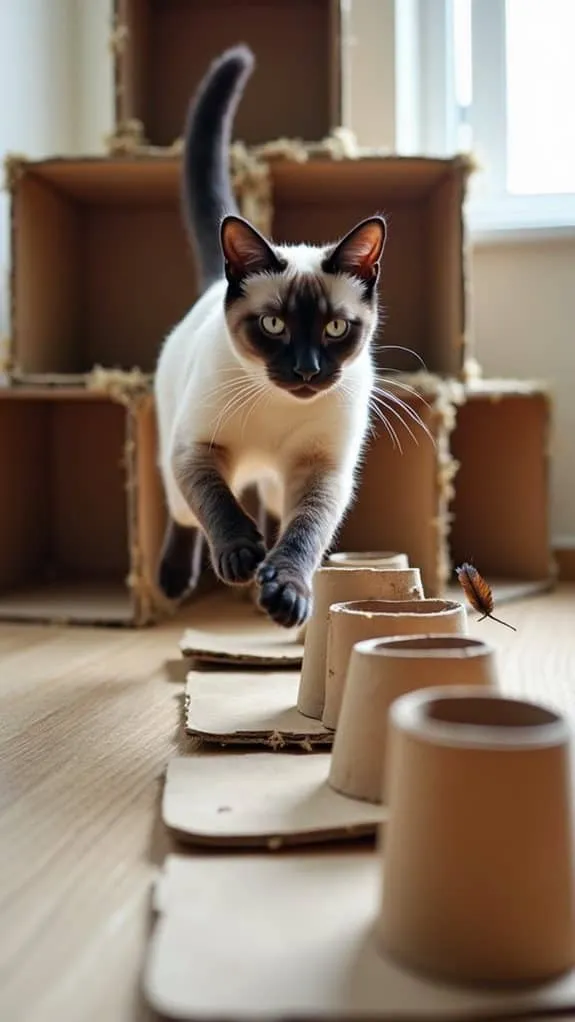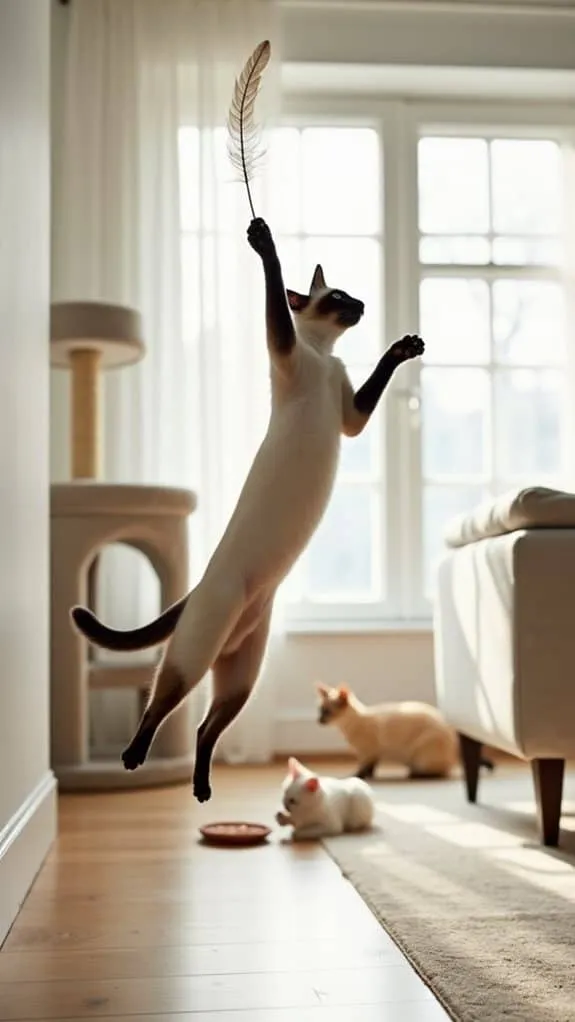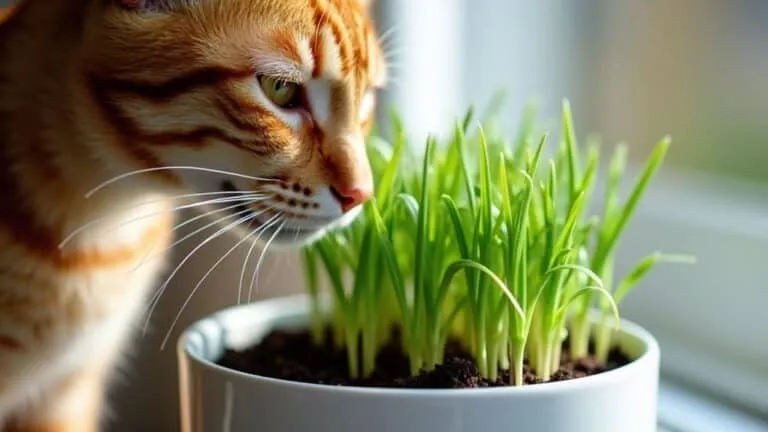The Best Fluffy Pancakes recipe you will fall in love with. Full of tips and tricks to help you make the best pancakes.

Did you know that indoor cats spend up to 90% of their day sleeping or lounging around? While your furry friend's couch-potato lifestyle might seem adorable, it's not doing their health any favors. You don't need a massive house or fancy equipment to keep your cat fit and thriving – even a small apartment can become the perfect feline fitness center with the right approach. Let's explore how you can transform your indoor space into an engaging exercise paradise that'll have your cat purring with satisfaction.
The Science Behind Cat Exercise and Health

A healthy cat is an active cat, and understanding the science behind feline exercise reveals just how essential movement is for your pet's wellbeing. When you engage your cat in daily physical activity, you're not just boosting their cat agility – you're supporting their entire health system.
Just 30 minutes of exercise a day helps maintain healthy weight, strengthens muscles, and reduces the risk of serious conditions like diabetes and arthritis. Starting with short play sessions and gradually increasing duration helps establish a sustainable exercise routine. While cats may spend up to 16 hours sleeping, they still require regular exercise to maintain optimal health. Regular grooming can also play a role in maintaining their overall coat health during active play.
Your cat's play motivation isn't just about fun – it's their body's way of staying sharp and healthy. Think of exercise as preventive medicine: it keeps your furry friend's weight in check even when their appetite fluctuates, while simultaneously fighting stress and anxiety.
Creating an Indoor Exercise Paradise
Start by strategically placing cat furniture near windows, creating the perfect spots for your feline friend to watch birds and stay active.
For high-energy cats with limited space, consider adding a cat exercise wheel to give them an engaging way to burn energy, especially during nighttime activity.
You'll want to include essential playtime essentials like cat towers for climbing and interactive toys that spark their natural hunting instincts. Schedule two daily sessions to ensure consistent exercise and engagement.
Don't forget to set up a dedicated play area with rotating activities – one day it's kitty soccer with cardboard walls, the next it's an obstacle course with tunnels and climbing bars.
Consider installing window perches and creating a mini indoor jungle gym with scratching posts and elevated platforms.
Your cat will love having their very own fitness paradise where they can jump, climb, and play to their heart's content!
DIY Cat Obstacle Course Ideas

Building an exciting obstacle course for your cat doesn't require fancy equipment or a big budget – you can create an amazing agility playground using everyday items from around your home!
Let your obstacle creativity shine by transforming common household items into feline agility equipment. Prop broomsticks on soup cans for jumps, create tunnels from cardboard boxes, and set up weave poles using water-filled bottles. You'll love watching your cat master these challenges! A well-designed course provides essential mental stimulation for your feline friend. Additionally, incorporating vertical spaces can enhance the enjoyment and challenge of the course.
For vertical elements, arrange step stools and ottomans at different heights, or craft a ramp using a plank and chair. Regular maintenance of obstacles will prevent safety hazards and ensure a secure play environment.
Remember to keep safety in mind – secure all obstacles properly and supervise your cat's playtime. Start with simple setups and gradually increase difficulty as your furry friend builds confidence.
With positive reinforcement and treats, you'll have a happy, active cat in no time!
Mental Enrichment Through Active Play
Mental enrichment plays an essential role in keeping your indoor cat happy, healthy, and well-behaved. The playtime importance can't be overstated – schedule 2-3 daily sessions for older cats and up to 10 for energetic kittens, focusing on dawn and dusk when they're naturally most active. Keep sessions to 10-15 minute intervals to maintain your cat's interest and energy levels. Additionally, providing a clean litter box is vital, as a dirty environment can lead to stress and aversion to play.
To boost your cat's cognitive engagement, use interactive toys that mimic prey, like wand toys and laser pointers. A lack of enriching activities can lead to chronic boredom and depression in indoor cats.
You'll find that puzzle feeders and treat-hiding games are fantastic ways to challenge your furry friend's problem-solving skills.
Don't forget to mix things up by rotating toys and introducing new challenges.
Try clicker training for an extra mental workout – it's not just for dogs!
Your cat will love these engaging activities, and you'll notice they're more relaxed and content after exercising both body and mind.
Building a Daily Exercise Routine

Successfully integrating exercise into your cat's daily routine requires dedication and a dash of creativity. You'll want to aim for at least 30 minutes of scheduled playtime each day, broken into shorter sessions that won't overwhelm your feline friend. Five to fifteen minutes of exercise multiple times per day matches your cat's natural activity patterns. Engaging activities also facilitate cognitive abilities that contribute to their overall mental well-being.
Regular exercise helps cats maintain emotional well-being and reduce stress levels.
To boost exercise motivation, try incorporating these engaging activities:
- Use interactive toys like feather wands to tap into natural hunting instincts
- Create vertical adventures with cat trees and climbing structures
- Set up indoor obstacle courses using cushions and balance trainers
- Mix up activities to keep your cat interested and mentally stimulated
Remember to consult your vet about the right exercise level for your cat's age and health.
You can even make exercise fun for both of you by incorporating your furry friend into your own workout routine. Just keep sessions short and sweet, with plenty of rest breaks in between.
Final Thoughts
You've got the power to transform your cat's life through regular exercise, and the statistics prove it: cats who exercise daily live an average of 3-5 years longer than their sedentary counterparts. By implementing these indoor fitness strategies, you'll help your feline friend maintain a healthy weight, reduce stress, and boost their overall happiness. Don't wait – start building your cat's exercise routine today, and you'll both enjoy the pawsitive results!








